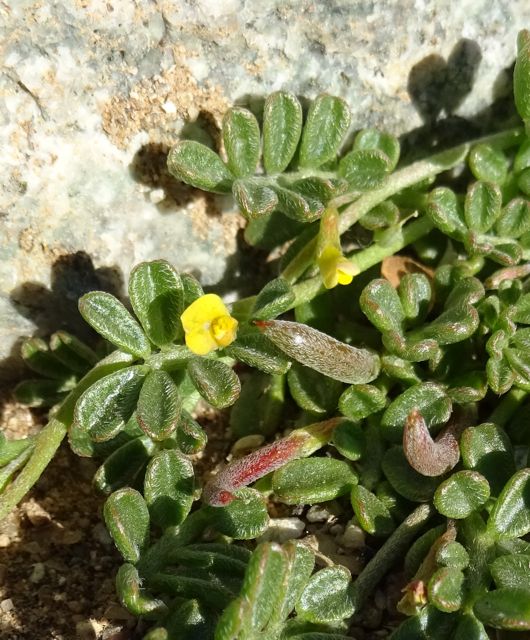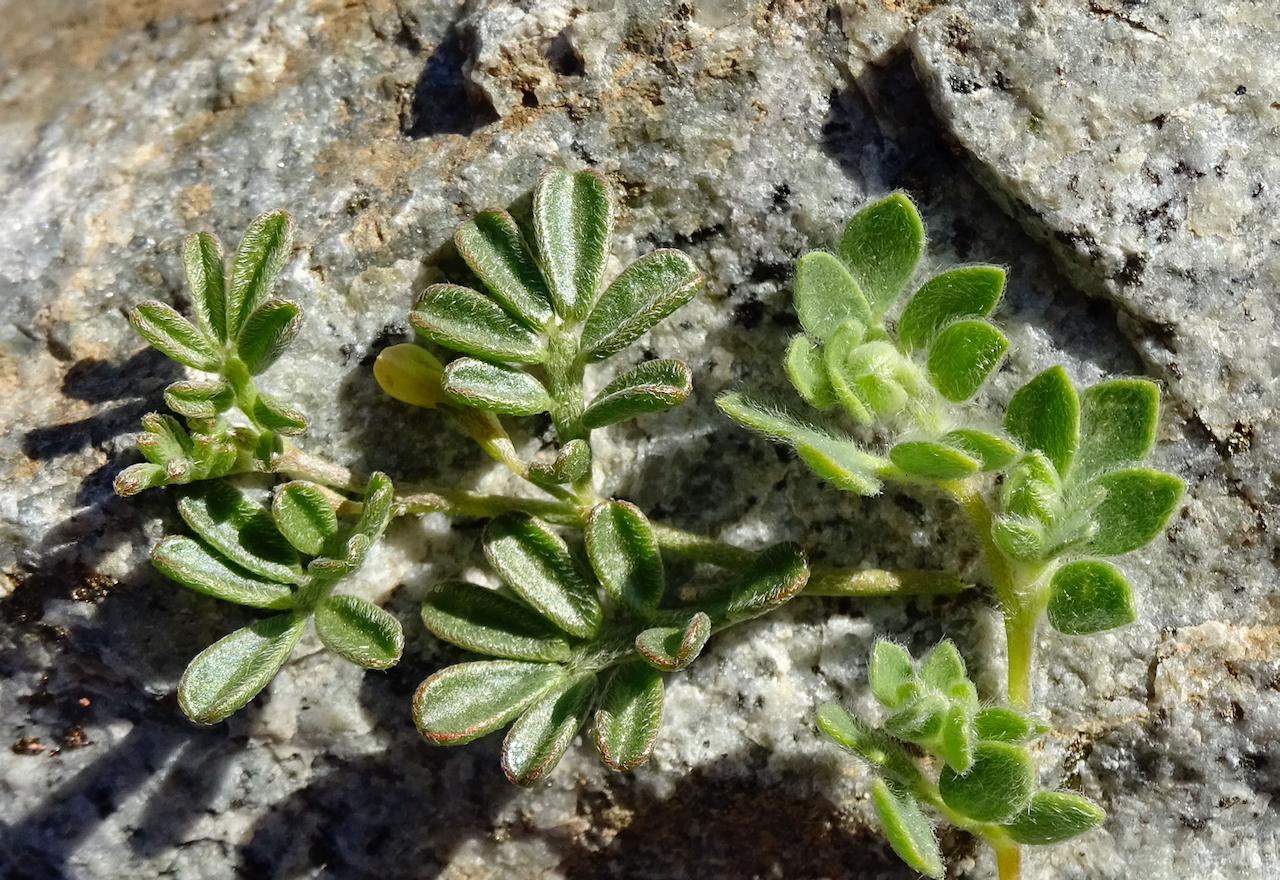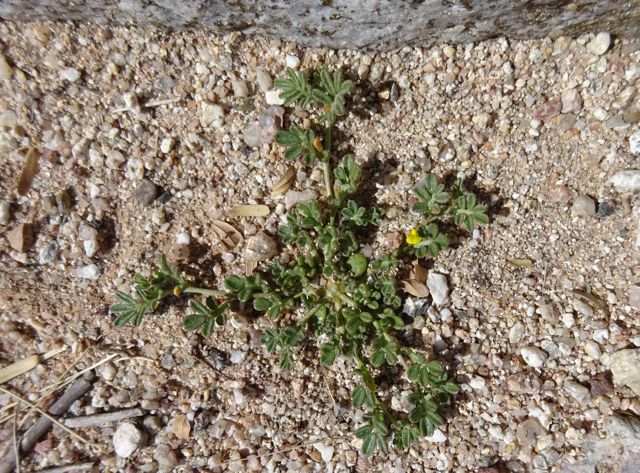Strigose Bird's Foot Trefoil
Acmispon strigosus

About the Plant
This small native wildflower stays low, providing a nice spring groundcover. The yellow flowers are small and never very abundant, though they will catch your eye. An annual, this trefoil needs no care from you other than to leave it alone until it dies back and seeds are released.
Strigose bird's foot trefoil is very similar to foothill deervetch and they can often be found together. To distinguish, look at the leaves. Trefoil is shown in the picture below, to the left. There are at least 5 leaflets per leaf and each leaflet appears folded and thick. Foothill deervetch, to right in picture below, has 4 and only 4 leaflets per leaf. The leaflets are thin and not folded.
Note: previous scientific name for this plant was Lotus strigosus.
Wildlife value: this plant may attract small butterflies.
More Information:
Weekly Plant on strigose bird's foot trefoil
Technical botanical description from SEINet
ID Characteristics
This plant is in the Fabaceae - the legume (pea and bean) family.
Strigose bird's foot trefoil grows to only about an inch high but it can spread to a foot wide.
The alternate leaves of this trefoil are divided into several leaflets, always 5 or more. Each leaflet is creased down the middle making it look like it is folded. Click on the photo above (or the photo to the left) to see the strigose hairs. They are straight and flattened against the surface of the leaf.
The flowers are yellow, sometimes with a hint of orange, with the classic "pea" flower shape. The flowers are small, one-fourth of an inch at most, and are held on a short stalk (look at the base of the right-most flower). The plant may cover the earth but will never have the appearance of covering the earth with yellow flowers, for the flowers are never abundant.
The fruit is roundish, slightly curved (banana-shaped), and often reddish.

